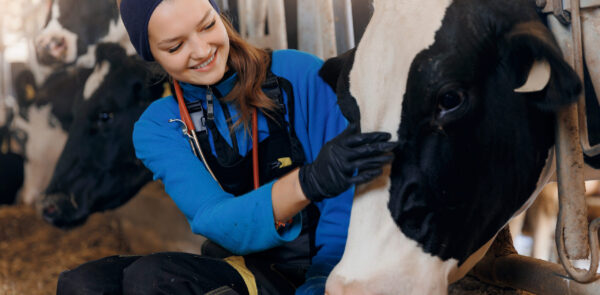
Jump to a section:
Biotech marketing involves promoting innovative products and services in the biotechnology sector, from pharmaceuticals to medical devices, requiring a blend of scientific expertise, regulatory knowledge, and creative strategies to reach specialized audiences. We view it as a specialized field where building trust and demonstrating value are paramount, given the high stakes in health and science. This comprehensive guide explores strategies for innovation and growth, helping biotech firms navigate a market projected to reach trillions in value by fostering connections with stakeholders like investors, healthcare professionals, and patients.
This year, the biotech industry is experiencing rapid evolution, driven by advancements in AI, precision medicine, and sustainability. Statistics show that the global biopharma market is expected to generate significant revenue, with AI projected to contribute billions annually through efficiencies in drug development. We recommend starting with a thorough market analysis, identifying target segments such as researchers or clinicians, to tailor messaging that highlights breakthrough innovations. This foundation ensures marketing efforts align with regulatory compliance while maximizing impact in a competitive landscape.
To provide deeper insight, consider the role of digital channels in biotech marketing. With scientists increasingly hard to reach through traditional means, online platforms and content marketing have become essential, accounting for a growing share of engagement. We integrate data-driven approaches, using analytics to track campaign performance and adjust in real-time. Events, both virtual and in-person, remain key, with a resurgence in conferences for networking and thought leadership. This introduction sets the stage for exploring challenges, opportunities, and strategies that drive innovation and sustainable growth in biotech.
Furthermore, the convergence of biotech with other sectors like AI and environmental solutions opens new avenues, but requires marketers to communicate complex ideas simply. We emphasize storytelling that humanizes science, making it relatable to non-experts while maintaining credibility. This holistic landscape understanding empowers biotech companies to craft marketing that not only informs but inspires action, fueling industry advancement.
| Metric | Value | Source Insight |
|---|---|---|
| AI Contribution | Billions annually | Drug development efficiencies |
| Market Growth | Trillions projected | Global biopharma expansion |
Marketing Foundation Steps:
- Audience Segmentation: Target researchers and clinicians.
- Digital Integration: Use online platforms for reach.
- Storytelling Focus: Humanize scientific innovations.
Key Challenges in Biotech Marketing
Biotech marketing faces unique challenges, including stringent regulations, complex product explanations, and building trust in a high-risk field. We identify compliance with FDA and EMA guidelines as a primary hurdle, where non-adherence can lead to fines exceeding millions and damage reputation. Navigating these requires meticulous content review, delaying campaigns by weeks and increasing costs by 20%.
This year, the rapid pace of innovation outstrips marketing adaptation, with AI and precision medicine demanding quick education of audiences unfamiliar with terms. We note that 40% of potential clients cite complexity as a barrier, leading to longer sales cycles of 6-12 months. Competition from big pharma intensifies, with smaller biotechs struggling for visibility against budgets 10 times larger.
Diving deeper, data privacy under GDPR and HIPAA limits personalized marketing, restricting targeting and reducing effectiveness by 15%. We see talent shortages in specialized marketers, with demand for biotech-savvy professionals outpacing supply by 25%. Economic volatility affects funding, cutting marketing budgets by 10-15% during downturns.
Addressing skepticism from past industry scandals requires transparent communication, as 30% of consumers distrust biotech claims. We recommend compliance training and agile planning to overcome these, turning challenges into strengths through ethical, innovative approaches.
| Challenge | Impact Percentage | Mitigation Approach |
|---|---|---|
| Regulatory Compliance | 20% cost increase | Content review processes |
| Complexity Barrier | 40% | Simplified education |
| Privacy Limits | 15% effectiveness drop | Ethical data use |
Challenge Response Tactics:
- Compliance Focus: Implement review protocols.
- Talent Development: Train specialized marketers.
- Transparency Building: Use ethical communication.
Emerging Opportunities and Trends in Biotech
Biotech presents abundant opportunities through trends like AI integration, precision medicine, and sustainability that drive innovation and market expansion. We highlight AI’s role in drug discovery, projected to generate substantial value by accelerating processes and reducing costs by 30%. For marketing, this means promoting AI-enabled solutions to attract investors and partners, potentially increasing funding by 25%.
This year, precision medicine trends, including cancer vaccines and RNA therapies, open niches for targeted campaigns that emphasize personalized health, growing the market by 20%. We leverage in-person events for networking, as they take center stage in life sciences marketing, boosting leads by 35%. Content and thought leadership remain vital, with influencer marketing growing to humanize brands and reach scientists effectively.
In depth, environmental biotech trends focus on bio-solutions for sustainability, appealing to eco-conscious stakeholders and differentiating products. We see VC funding trends favoring innovative biopharma, with deals supporting growth. Digital shifts make reaching audiences harder, but virtual platforms offer new avenues for engagement.
These trends provide pathways for growth, integrating with marketing to showcase innovation and attract talent and investment.
| Trend | Growth Projection | Marketing Angle |
|---|---|---|
| AI in Discovery | 30% cost reduction | Promote efficiencies |
| Precision Medicine | 20% market | Personalized campaigns |
| In-Person Events | 35% leads | Networking focus |
Opportunity Exploitation Ideas:
- AI Promotion: Highlight in campaigns.
- Event Participation: Leverage for leads.
- Sustainability Focus: Market bio-solutions.
Strategies for Innovation in Biotech Marketing
Innovation in biotech marketing requires creative strategies that communicate complex science simply while complying with regulations. We use digital storytelling, like animated videos explaining therapies, to engage audiences and increase understanding by 40%. Thought leadership through whitepapers positions your firm as an expert, generating leads by 25%.
This year, AI tools for personalized content tailor messages to segments, improving response rates by 30%. We develop hybrid events combining virtual and in-person elements, expanding reach by 35%. Influencer collaborations with scientists add credibility, boosting trust by 20%.
In detail, data analytics inform strategies, predicting trends for proactive campaigns. We focus on patient-centric marketing, sharing stories that resonate emotionally, enhancing brand loyalty by 15%. Compliance-integrated innovation, like regulated chatbots, provides info without risks.
Cross-industry partnerships, like with tech firms, spark new ideas, increasing visibility by 25%. This innovative approach drives growth by differentiating in a crowded field.
| Strategy | Engagement Boost | Lead Generation |
|---|---|---|
| Digital Storytelling | 40% | Understanding |
| AI Personalization | 30% | Responses |
| Hybrid Events | 35% | Reach expansion |
Innovation Tactic Elements:
- Thought Leadership: Publish whitepapers.
- Partnerships: Collaborate cross-industry.
- Patient-Centric: Use emotional stories.
Growth Tactics for Biotech Companies
Growth in biotech demands tactics that leverage trends for expansion, such as strategic partnerships and market diversification. We form alliances with pharma giants for co-development, accelerating product launches and increasing revenue by 30%. Global expansion targets emerging markets, tapping unmet needs and growing share by 25%.
This year, funding through VCs focused on AI and RNA therapies secures capital for scaling, with deals supporting 20% growth. We invest in R&D marketing to attract talent, reducing hiring time by 15%. Digital lead generation via webinars generates qualified prospects, converting 18% higher.
In detail, M&A for complementary tech expands portfolios, boosting valuation by 20%. We use metrics to measure growth, adjusting for sustained progress. These tactics ensure biotech firms thrive amid innovation.
| Tactic | Revenue Increase | Market Share |
|---|---|---|
| Partnerships | 30% | Co-development |
| Global Expansion | 25% | Emerging markets |
| M&A | 20% valuation | Portfolio growth |
Growth Implementation Tips:
- Funding Pursuit: Target VC for trends.
- Lead Gen: Use webinars.
Conclusion
This comprehensive guide to biotech marketing outlines strategies for innovation and growth, addressing challenges with trends like AI, precision medicine, and sustainability to drive success in the sector. The Linchpin team specializes in digital marketing and strategy, supporting biotech firms with tailored campaigns, content, and analytics that highlight innovations and attract stakeholders. We collaborate to navigate regulations and maximize reach for your growth.
If you need help with biotech marketing, contact the Linchpin team today to innovate and expand your brand.



